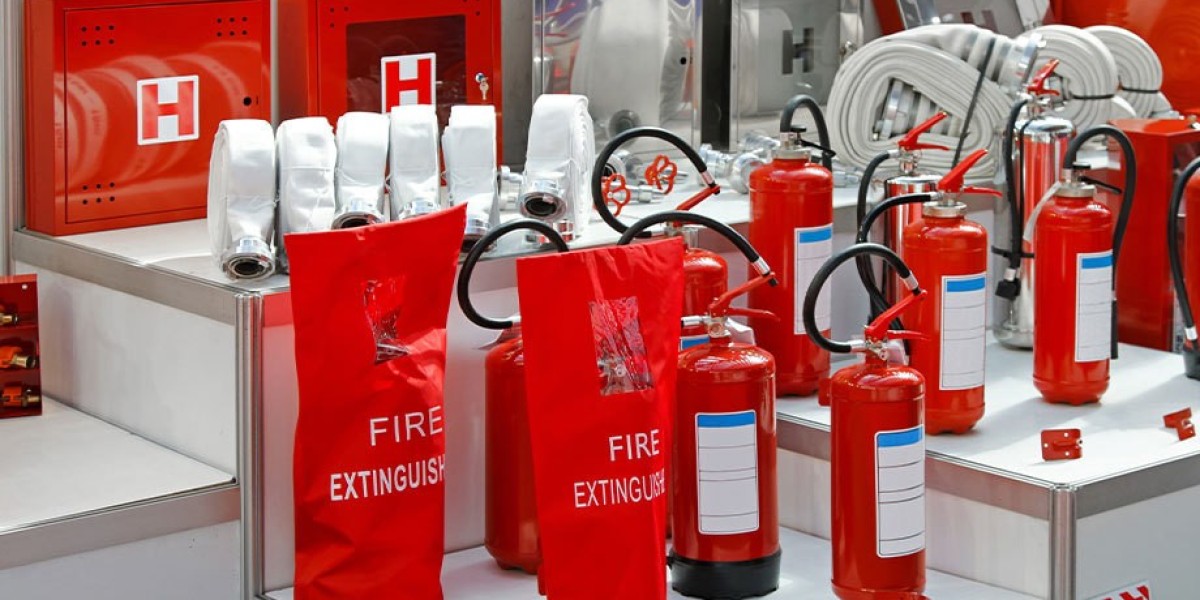Restaurants face a unique and heightened risk of fire due to the nature of their operations. With open flames, hot surfaces, and highly flammable cooking oils, the kitchen is one of the most hazardous areas in any food establishment. Fires in restaurants can spread rapidly, causing significant property damage, business interruption, and most importantly, posing a serious risk to the lives of employees and customers. For this reason, restaurant fire suppression systems are not just important—they are essential.
In this article, we will explore the importance of fire suppression systems in restaurants, the different types of systems available, and the essential elements of a comprehensive kitchen fire safety plan.
Why restaurant fire suppression Systems Are Essential
A restaurant's kitchen is filled with potential fire hazards, including deep fryers, stoves, grills, ovens, and electrical appliances. The heat and grease buildup in cooking equipment create an environment where fire can quickly escalate. Without an effective fire suppression system, a small fire can spread quickly, threatening the safety of everyone in the building and causing costly damage.
Restaurant fire suppression systems serve multiple purposes:
- Minimizing Risk to Life and Property: The primary goal is to protect the lives of staff and customers by controlling and extinguishing fires before they can spread. These systems also help prevent extensive property damage.
- Preventing Business Disruption: A fire, even a small one, can result in the closure of the restaurant for days or weeks, leading to significant revenue loss. A functioning suppression system helps mitigate these risks.
- Compliance with Fire Safety Regulations: Local and national regulations, including those from the National Fire Protection Association (NFPA), require restaurants to have fire suppression systems in place. Failure to comply can result in fines or even forced closure.
Types of Restaurant Fire Suppression Systems
The fire suppression system in a restaurant kitchen must be specifically tailored to address the risks associated with cooking equipment, particularly grease fires. Several types of systems are used in restaurants, each with its own mechanism of action.
Wet Chemical Fire Suppression Systems Wet chemical fire suppression systems are the most common and effective type of fire suppression system for commercial kitchens. They are specifically designed to combat grease fires, which are a major risk in restaurant kitchens.
- How it Works: When a fire occurs, the system automatically releases a wet chemical agent that cools the fire and prevents re-ignition. The agent also forms a soapy foam layer that smothers the flames, cutting off their oxygen supply.
- Application: This system is particularly useful in areas with deep fryers, grills, and ranges where grease buildup can lead to catastrophic fires.
- Advantages: Wet chemical systems are effective at rapidly suppressing grease fires and preventing them from spreading. They are designed to be used in high-temperature cooking environments.
Automatic Sprinkler Systems Sprinkler systems, commonly used in other areas of buildings, can also be used in kitchens. While they are not specifically designed for grease fires, they provide general protection against the spread of fire throughout the restaurant.
- How it Works: When the temperature rises above a certain threshold, sprinklers are activated, releasing water to suppress the fire.
- Limitations: Sprinklers may not be effective in preventing the initial outbreak of a grease fire. Additionally, water can cause further damage to cooking equipment and food items in the kitchen. This is why wet chemical systems are typically the preferred choice in kitchens.
Clean Agent Fire Suppression Systems Clean agent systems use non-toxic gases or chemicals to suppress fires without causing damage to sensitive equipment, such as electrical devices or computers. While these systems are more commonly used in data centers or server rooms, they can be employed in certain restaurant areas where there is a risk of electrical fires.
- How it Works: Clean agents, like FM-200 or CO2, are released into the affected area to displace oxygen, effectively suffocating the fire without causing harm to equipment or leaving behind residue.
- Applications: These systems are ideal for areas where electronics are present (e.g., cash registers or point-of-sale systems) or where water-based suppression systems could cause damage.
Fire Extinguishers While not an automatic suppression system, fire extinguishers are an essential part of a restaurant's fire safety plan. Employees should be trained to use the right type of fire extinguisher for different classes of fires. The most commonly used fire extinguishers in kitchens are:
- Class K Fire Extinguishers: Specifically designed to fight kitchen fires involving cooking oils and fats. These extinguishers are typically used for grease fires and contain a wet chemical agent that works similarly to a wet chemical suppression system.
- Class ABC Fire Extinguishers: These are multipurpose extinguishers effective for fighting Class A (ordinary combustibles), Class B (flammable liquids), and Class C (electrical) fires.
Fire extinguishers should be easily accessible and clearly marked within the kitchen, and staff should be trained on their proper use.
Key Components of a Restaurant Fire Suppression System
In addition to choosing the right fire suppression system, restaurant owners must ensure the system is properly designed, installed, and maintained. Key components include:
Fire Detection and Alarm Systems Early detection of a fire is crucial. Smoke and heat detectors should be strategically placed throughout the kitchen and dining areas to trigger an alarm at the first sign of a fire. This allows employees to respond quickly and evacuate if necessary.
Hood and Duct Systems Cooking equipment in restaurants generates significant heat and grease, which can quickly lead to a fire hazard. Fire suppression systems must be integrated into kitchen exhaust hoods and ductwork. These systems are activated when a fire is detected and discharge suppression chemicals directly onto the cooking equipment and into the ducts.
Manual Activation In addition to automatic activation, restaurant staff should have the ability to manually activate the fire suppression system if necessary. This ensures that the system can be triggered even if the automatic sensors fail to detect the fire.
Maintenance and Inspection Regular maintenance and inspection of fire suppression systems are crucial for ensuring that they function properly when needed. This includes checking the chemical agent levels, inspecting nozzles, testing alarms, and verifying that all components are in working order.
Employee Training Proper training for kitchen staff is critical to ensuring that they know how to respond to a fire emergency. Employees should be trained in using fire extinguishers, understanding the fire suppression system, and executing safe evacuation procedures. Regular fire drills should be conducted to ensure readiness.
Conclusion
Fire suppression systems in restaurants are not just a safety measure—they are a legal and business necessity. The risks associated with cooking equipment, grease, and high heat make restaurants particularly vulnerable to fire. Having the right fire suppression system in place can help prevent devastating losses and protect the lives of both employees and customers. Whether it's a wet chemical system for grease fires, sprinklers for general protection, or fire extinguishers for quick response, each restaurant should have a tailored fire suppression plan based on its specific needs. Regular maintenance, staff training, and compliance with fire safety regulations are essential components of a comprehensive restaurant fire safety strategy.









